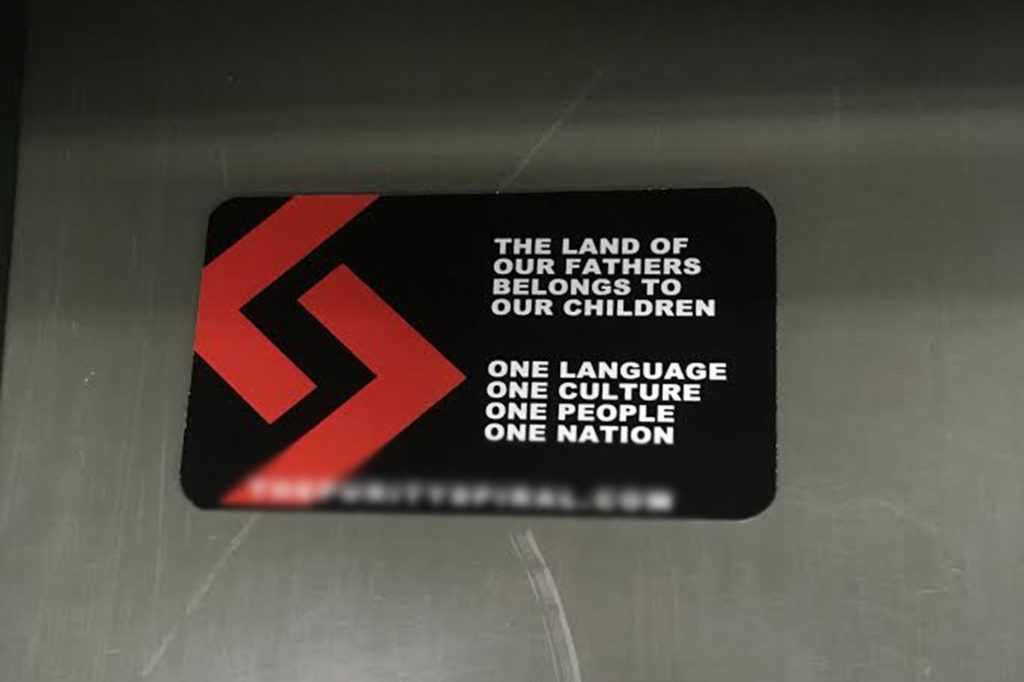As racial extremism continues to rise, how should journalists cover it in their own backyards?
By Isabella Rosario
On Aug. 20, 1939, The New York Times ran a glowing profile detailing aspects of Adolf Hitler’s home life. The lead read, “High up on his favorite mountain, he finds time for politics, solitude, and frequent official parties.”
Just 12 days later, Nazi Germany invaded Poland, marking the beginning of World War II.
Fast forward to Nov. 25, 2017 — the Times published a profile about white nationalist Tony Horvater called, “In America’s Heartland, the Nazi Sympathizer Next Door.”
The article is difficult to read, depicting Horvater as “polite and low-key” and “a big ‘Seinfeld’ fan” and littered with quotes from him such as, “At this rate, I’m sure the presidential candidate [leftist-libertarians will] put up in a few cycles will be an overweight, black, crippled d*** with dyslexia.”
Of course, hindsight is 20/20. And Richard Fausset’s egregiously myopic profile of an Ohio white nationalist obviously does not fall on the same plane as the Times’ humanizing 1939 portrait of one of the evilest men to ever live. What Fausset’s story does illustrate, however, is how almost 70 years later, journalists at the the Times and elsewhere still struggle to ethically cover the worst humanity has to offer.
The next day, the Times penned a response to readers’ harsh feedback. While apologizing for the offense their readers took to the article, the writers said the story intended to describe how embedded racial hatred and extremism have become in American life.
RELATED: Neo-Nazi card found in library
Perhaps that’s the most terrifying thing about white nationalism, past and present. We tend to think of these people as monsters. What’s even more terrifying is that they’re human. They may even like some of the same TV shows we do (Horvater is described as having a “Twin Peaks”-inspired tattoo).
And while accepting this fact is imperative to our role as journalists in analyzing this horrifying extremism phenomena, our investigation must be rooted in how extremists are not ordinary citizens. We must call out the gaping holes in their arguments. Fausset’s profile makes the mistake of letting Horvater’s white nationalist views go unchecked. And while the strategy of allowing subjects to bury themselves is appropriate in some instances, in this case, it didn’t foster new understanding. If anything, it was free advertising for alt-right extremists.
Since the 2016 presidential election, American bigotry has revealed itself brazenly at numerous levels. Sometimes, it can be difficult to differentiate between racism based in ignorance and that which is rooted in hatred. And yes, there is a difference — one that I struggle to navigate between every day as a person of color. Self-identified white nationalists are obviously not on the same plane as your average rural racist. But they are just as human as them.
As journalists, our interactions with extremism cannot stop at recognizing bigots as human beings. Our work is not finished when we detail a white nationalist’s Applebee’s order. We must not misconstrue passivity with objectivity but instead strive to hold our subjects accountable — to ask them tough questions. To search for answers ourselves when they aren’t willingly given.
In order for America to eradicate white nationalism, it must accept that Nazi sympathizers really do live just next door. Journalists must pry those doors open.



